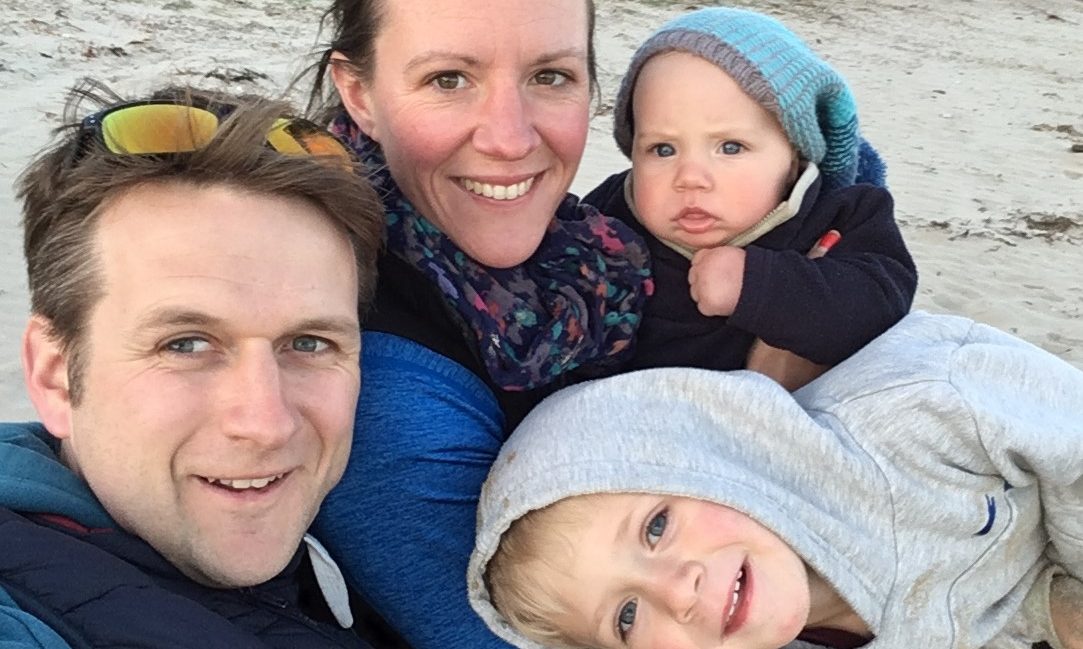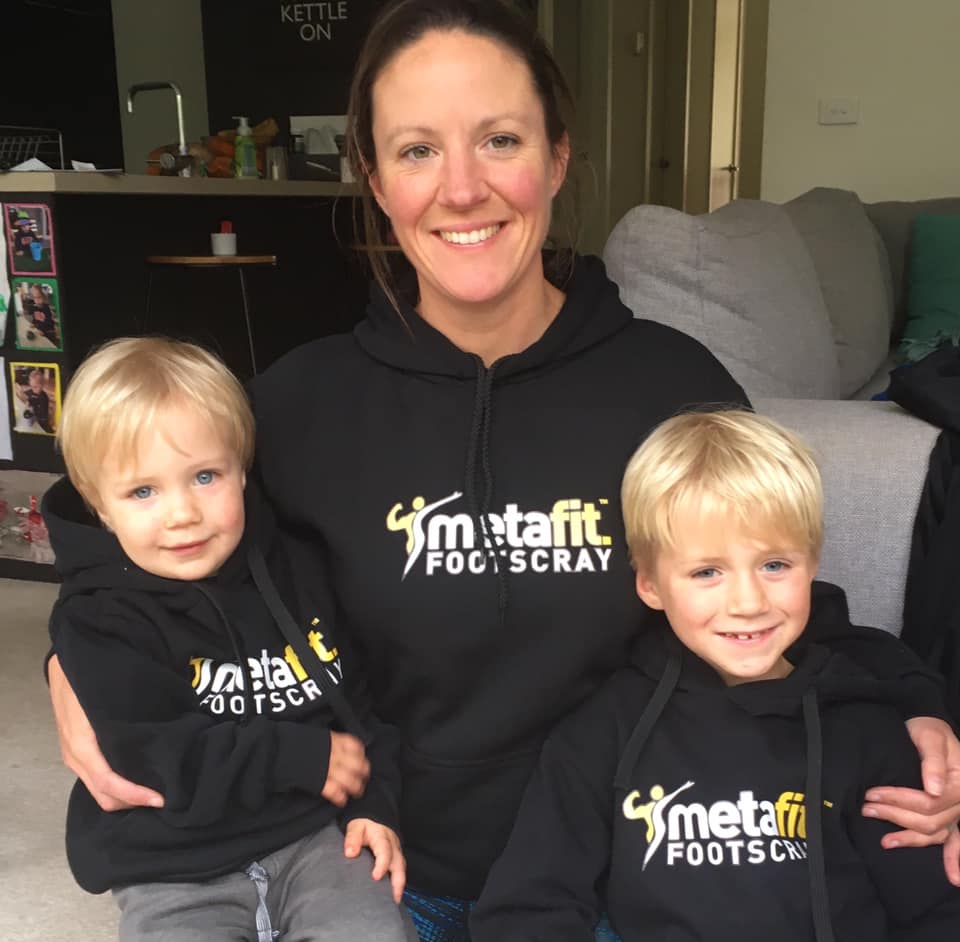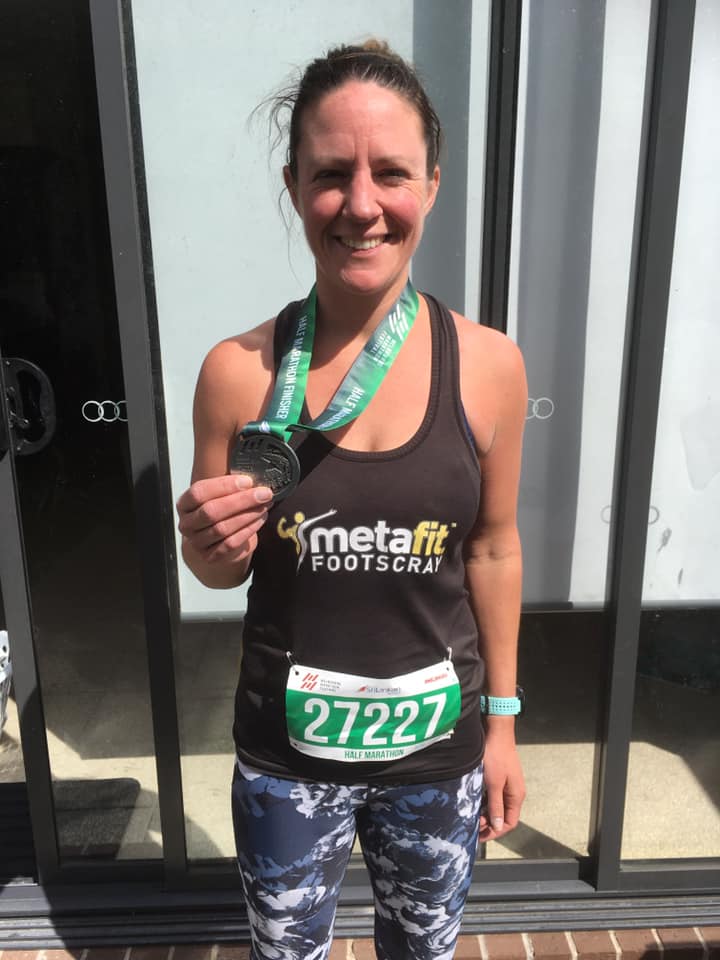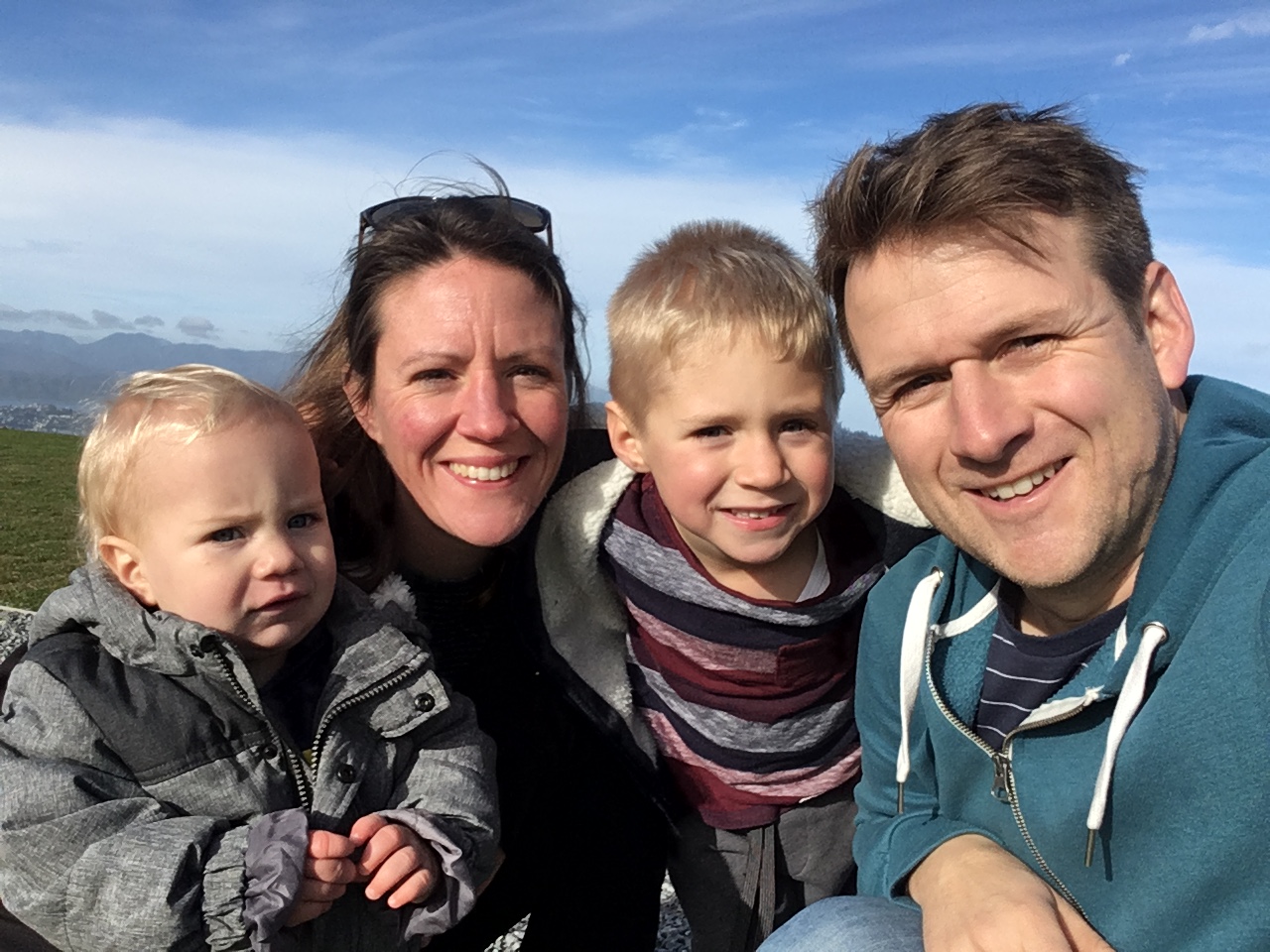Jennie’s had baby George since her MPN diagnosis

Jennie and Russell Wigginton had to put their plans to have a second child on hold when Jennie was diagnosed “out of the blue” with essential thrombocythaemia (ET) in May 2015.
Their son, Austin, was two at the time, and the Wiggintons had been trying for a second child for six months.
“We got pregnant quite quickly with our first,” said Jennie, now 39, a social worker who also runs her own business as a fitness instructor and personal trainer.

In the build-up to her diagnosis, Jennie had been getting severe headaches.
“Really painful headaches, where you could take Panadol and Nurofen and it wouldn’t even touch the sides,” she explained.
Russell, concerned she may be diabetic, suggested she go to the doctor, and three days after having blood tests, Jennie got a call saying she needed to see the doctor again, straight away.
“My results showed my blood platelet count was up near the two million mark, and when I asked what the usual range was, it was 450, so it was massively out of the normal range.
“They said, ‘look, it’s in line with essential thrombocythaemia’ and sent me to the emergency department, to see whether I needed to see someone urgently about it.”
Jennie was told there was nothing they could do at that time, and to go home, take some aspirin and the haematology department would be in touch.
“Within a week, they did some very thorough work and checked all my levels. I had an ultrasound of my spleen, a CT scan of my brain, and a bone marrow biopsy, before I started any medication.
“Then I went on hydroxyurea, initially, to help control my platelet count.
“The bone marrow biopsy actually revealed the early stages of myelofibrosis (MF). I’ve got some scarring on my bone marrow,” said Jennie.
Her diagnosis was a combination of MF and ET and she began seeing her haematologist every fortnight and had regular blood tests.
“The platelets started responding straight away and they’ve gradually come down, but not ever to within the normal range.
“When I first found out I had this condition, I was told MPN normally affected people in their 60s or older,” said Jennie who was 35 at the time.
“I wondered what it meant for me as a younger person and somebody who wanted to continue with having more children. I didn’t know what the impact was going to be, so obviously it was a little bit scary.
“I remember that day coming back from the doctors and just being in shock and thinking, gosh, what does this all mean? You think about your own immortality… am I going to be around to watch my children grow up, or my child at that point, and am I going to be able to have more children? You just don’t know.

“And I’d never heard of it [MPN] before and didn’t know anything about the condition.
“So, you’re just really shocked by it because it took me out of the blue. Suddenly I’m being told I’ve got a blood cancer, and not knowing what the future held,” said Jennie.
“I’m someone who likes to keep fit but I had to balance that as I was concerned because I was at risk of blood clots because of my high platelets.
“Once my blood platelets came down more into range, I felt more comfortable. I was taking aspirin to thin the blood, and the doctor said it was good to keep exercising and moving.”
When first diagnosed, Jennie mentioned to her haematologist that she had been unsuccessful in falling pregnant again. She was told it might be due to her blood condition and to stop trying for the moment.
“I went to a fertility specialist who talked about having cancer as a young person and the implications of different treatments and how they can impact on your fertility,” said Jennie.
“We talked through options about the possibility of freezing eggs, or IVF, stuff like that, but as we were not at that point, we would go down the natural route if we could and see how things go.”
Hydroxyurea successfully reduced Jennie’s platelet count over six months, from May to October 2015. Then, in November, she transitioned to interferon over three months before stopping hydroxyurea because of the implications that can have on a developing baby.
She initially injected herself with the interferon three times a week before the dosage was increased to five times a week.
“When you start that medication, often you get flu-like symptoms and start to feel quite groggy, but luckily it only lasted for the first few days. Your body adjusts and gets used to it. I was advised to take Panadol to help with any kind of aches.
“It was Roferon-A, not the pegylated one, I didn’t move on to that until later,” said Jennie.
“Before we could start trying to fall pregnant again, I had to be clear of the hydroxyurea for three months, so it had all got out of my system.

“I remember the doctors saying not much is known about pregnancy and MPN because not that many people of childbearing age have the condition.
“So it was kind of, ‘we know that you can’t have children on hydroxyurea and we believe interferon is the safest option for you, and the research shows that there’s not an impact on the baby’.
“I guess they don’t know 100 per cent, but it’s the safest form of treatment whilst you’re pregnant.
“But there were still risks of clotting and haemorrhaging and the placenta coming away from the womb. I was told that those were the inherent risks around having another baby.
“It was hard because we’d had our son. Did we just say, ‘that’s it, we’re done, and we’re not going to risk it?’ because the risks weren’t just for the baby, but potentially for me as well because of the blood clotting.
“We just took each step at a time and listened to the advice from the specialist doctors,” said Jennie.
“We got pregnant again in August 2016. Because of my blood condition, it was deemed as a high-risk pregnancy and I was under the care of specialist doctors.
“I was getting the best advice and care with lots of support, regular appointments, and monitoring.
“They picked up very early on, when I was about six weeks pregnant, that my thyroid levels were through the floor and in the danger zone for the baby developmentally.
“I had to go on thyroxine. They don’t know if the interferon had impacted my thyroid and damaged it, which it can apparently do, or whether I got Hashimoto’s disease, which is hereditary – my sister and my aunty both have it. Or it could have been brought on by pregnancy,” said Jennie, who continues to take thyroxine.
Mid-way through her pregnancy, with the blessing of her doctors, the Wiggintons went back to England for a month and a family Christmas. Jennie and Russell had migrated to Australia in 2010.
“I just had to make sure I had all the medications with me,” said Jennie.
She took an anticoagulant (blood thinner) before, during and after each flight, to minimise the risk of blood clots, and she drank lots of water.

All in all, Jennie’s pregnancy went well, and her obstetrician said she had done ‘amazingly well’. To minimise the risks during labour, the decision was made to induce her in the 39th week.
“Then nothing happened for 24 hours and, as I wasn’t dilated enough and the baby’s heart rate dropped, they did an emergency caesarean.
“He had some low blood sugar, because he was quite little when he was born, and had to go into special care for a few days until his blood sugar stabilised.”
George was born in May 2017, “a fine, healthy baby boy”, and Jennie and Russell, who had always hoped to have two children, and feeling lucky nothing major had happened, decided “enough’s enough, we’ll finish on a good note”.
Jennie continued her interferon medication until she heard that pegylated interferon [Pegasys®] become available on the Pharmaceutical Benefits Scheme.
“I went straight to my haematologist saying, ‘I’d like to try this’. I started on a low dose and that’s what I’ve been on since.
“It’s been great because it means now I only have to inject once a week rather than five days a week and have no ill effects from it. It’s just been a revelation, really, in terms of treatment for the illness.
“I never had any horrible side-effects on Roferon-A,” said Jennie, but she used to have “really bad itching” which was worse in winter when her skin was dry.
“I’d scratch so bad I’d bleed on my legs and on my tummy, but that’s gone for me now. I don’t know if it’s the pegylated interferon, or if it’s changing hormones or the environment.”
Jennie self-injects the pegylated interferon into the fatty subcutaneous area around her stomach.
“Sometimes, I inject into my leg, just to give my tummy a bit of a rest.”
Over the course of Jennie’s experience with MPN she has gone from seeing her haematologist every two weeks, to once a month, then six-weekly, and now it’s every three months.
When she spoke to MPN News Jennie had just received her latest results.
“My platelets were the lowest since I was diagnosed and only very slightly above the normal range which is really good.”
In June, Jennie asked to have her bone marrow tested again even though this is not usually done unless there is a change in presentation or bloods.
“Overall, it looks like the scarring has got worse since five years ago, but he [her haematologist] said it’s hard to decipher if it’s the progression of the disease or the impact of the interferon.
“As everything else looks good and there are no blast cells present, the decision was to carry on as normal.
“The only other options would be to go on ruxolitinib [Jakavi®] or a stem cell transplant but we decided, neither at this point.”
Jennie said she had been affected by “really bad headaches again”.
“Automatically, I go back to the worse-case scenario in my head, what’s wrong, something’s happening. Am I going to have a stroke because I have a blood clot or is the condition getting worse?”
“I’ve got a really good GP. She’s really thorough. She sent me for MRIs and referred me to the neurologist.
“I think it’s just about trying to keep a level head and also listening to your body.
“We’ve recently moved and had a lot of changes and I think it’s also about being kind to yourself and taking a bit of time out.”
In early-July, the family moved from Melbourne to rural Woodend where they have a “massive garden and a view of Mt Macedon”, and there’s been a new addition to the family, Monty, a kelpie puppy.
Since COVID-19, Jennie has worked her three days of social work a week from home rather than driving the hour into Melbourne, and she has moved her fitness business online and is training her clients from a distance. She keeps fit by running most days “for fitness and to clear your head”.
“I don’t let it [MPN] control me or dictate who I am or what I am, but sometimes I need to remember that I have this condition, and I do need to listen to my body and just slow down and rest, if my body’s telling me to,” she said.
But, as a mum with two young kids, running a family, and working, Jennie said, “it’s a necessity to keep going”.
“I do what I can to stay healthy, and ultimately my family is my inspiration.
“I want to be here for as long as I can to be with them and look after them and watch them grow up.
“It’s good to know that support is there if I need it.”
Jennie has joined the Leukaemia Foundation’s coffee mornings and been to the blood cancer conference in Melbourne a couple of times, although with a young family that’s not always easy.
“It takes quite a lot of effort for me to get to those meetings. I need to take time off work and find childcare,” she said.
“I’m on a few of the Facebook support groups. There are people in a similar situation to me, young, and wanting to talk about having babies with the condition. I’ve been able to share my knowledge and experience.
“It’s nice to know that you’re not out there on your own, especially when initially diagnosed, and that there are other people experiencing similar difficulties and that there are great support networks available to help and reassure each other.”
Last updated on February 21st, 2022
Developed by the Leukaemia Foundation in consultation with people living with a blood cancer, Leukaemia Foundation support staff, haematology nursing staff and/or Australian clinical haematologists. This content is provided for information purposes only and we urge you to always seek advice from a registered health care professional for diagnosis, treatment and answers to your medical questions, including the suitability of a particular therapy, service, product or treatment in your circumstances. The Leukaemia Foundation shall not bear any liability for any person relying on the materials contained on this website.